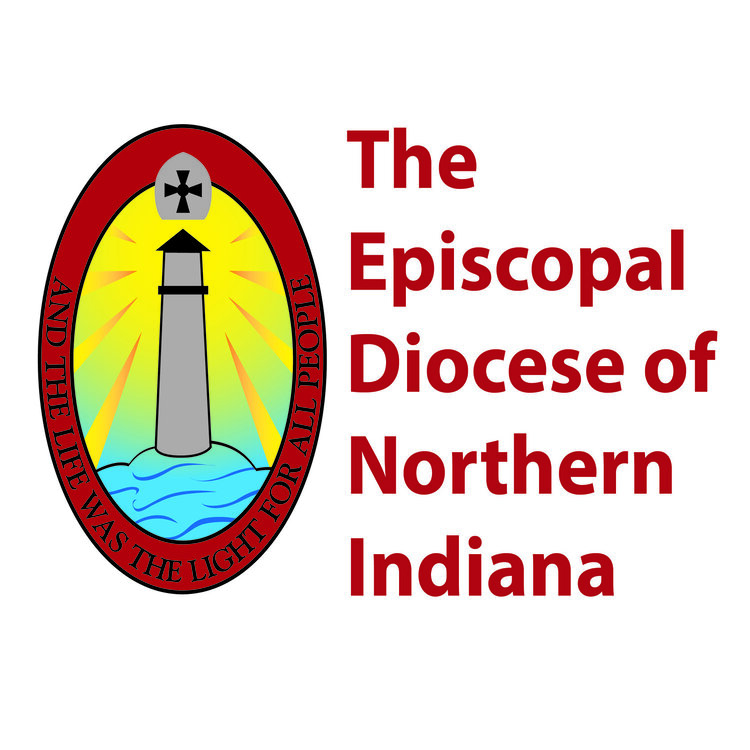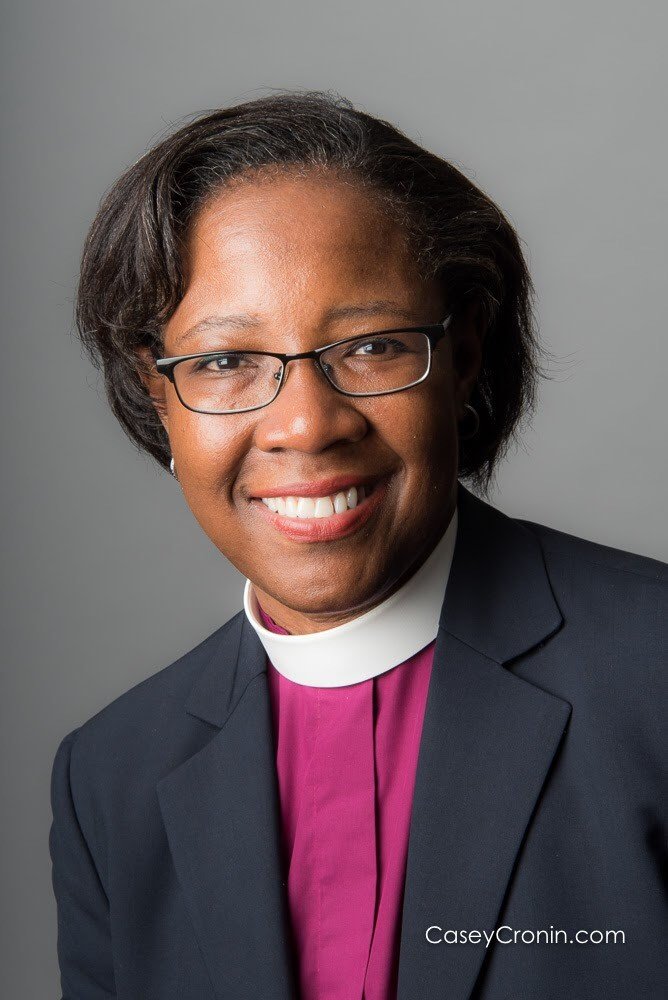Repairing a 125-year-old iconic (and leaking) bell tower, replacing decayed privacy fencing to protect children in emergency housing provided by a congregation, improving security systems to enable multiple users of church property, and transforming a parish hall into a hybrid meeting space for the community – these are brief highlights of the projects receiving capital grant funding through the Church Buildings for Collaborative Partnerships (CBCP) project.
CBCP is a project of the Episcopal Dioceses of Indianapolis and Northern Indiana, Partners for Sacred Places and Indiana Landmarks, funded by a Thriving Congregations grant from Lilly Endowment. Congregations that complete the CBCP program are eligible to apply for a small matching grant to make an investment in their building that helps further or develop a ministry, program, or space-use partnership.
So far, two cohorts of congregations from both dioceses have completed their CBCP participation. Twelve parishes were in Cohort 1 and fourteen were in Cohort 2. Each Cohort has two grant application deadlines. In the first round of funding, five Cohort 1 faith communities received a total of $29,085 in grants (see chart below).
“It is exciting to see what is happening in Indiana Episcopal churches as a result of CBCP participation,” said Joshua Castaño, Director of Special Initiatives at Partners for Sacred Places. “They are developing new partnerships that further their mission and make their buildings into active tools for ministry that is based on partnerships within and beyond the walls of the church.”
While CBCP capital grants are for material needs, they represent holy endeavors to expand ministry by using church buildings and property in collaboration with others in the community, as the grant applications explained:
Holy Family Episcopal Church, Fishers - Awarded $6,300 CBCP capital grant
Requested funding to expand the computer networked door lock system of the church.
“CBCP helped us look with fresh vision what was possible for Holy Family’s buildings and grounds, particularly on weekdays. Consequently, we now are hosting a community tutoring program and have just entered into an agreement with a children’s literacy program for the public. The latter program has a need for many of the outdoor spaces, while the tutoring program uses one or two classrooms. Being able to have each of these programs have access directly to the spaces they need would enhance both of their efforts, and the added keypads would allow us to more easily be open to hosting additional groups weekdays.”
St. Alban’s Episcopal Church, Indianapolis - Awarded $6,300 CBCP capital grant
Requested funding for projects including new keyless entry doors with handicapped accessibility and two security cameras.
“The focused [CBCP] training, site visit and community leaders meeting were all useful in our development of our current plan to turn the lower level into Alban’s Community Workplace, which will include rented offices to community organizations and a shared workplace that individuals can drop in to use on a subscription basis.”
St. Francis In-the-Fields Episcopal Church, Zionsville - Awarded $4,800 CBCP capital grant
Requested funding for technology to transform the Parish Hall into a hybrid meeting space for community groups needing in-person and tele-conference capabilities.
“We are in discussions with existing partners and new partners about how we can better provide a safe and welcoming space for their use. [With grant funds], we will be able to purchase the necessary items to fully engage with our community partners and provide them with critical hybrid meeting space that is in short supply in our community.”
St. John’s Episcopal Church, Mount Vernon – Awarded $4,185 CBCP capital grant
Requested funding to replace existing dilapidated privacy fencing and install additional fencing to completely enclose the backyard of church property to be used by the Department of Children’s Services for an emergency shelter for children.
“What will change for our parish is that we will go from being a financial supporter of other non-profit organizations to having our own hands-on partnership that will have a direct impact on the future of children in need of services (CHINS).”
St. Paul’s Episcopal Church, LaPorte – Awarded $7,500 CBCP capital grant
Requested funding for repair and restoration of the church bell tower to prevent further water damage.
“We cannot fully utilize our assets if we are not good stewards of them. The top priority for us must be the bell tower. The goal of the bell tower repair is to preserve St. Paul’s bell tower as a reference point for people looking to find St. Paul’s and to communicate that St. Paul’s is a welcoming, well-maintained, and easily identified location for worship, ministry, and service.”
The CBCP grant program is a highly competitive grant environment. Grant amounts awarded are impacted by the volume of requests in each Cohort, the quality of the applications (all have been excellent so far) and the need to be mindful of allocating the $255,000 total grant budget so that there is funding available for all four CBCP cohorts through 2023.
For more information about the Church Buildings for Collaborative Partnerships (CBCP) project, visit its website or contact CBCP Project Director Linda Buskirk at Linda@buskirksolutions.com.










